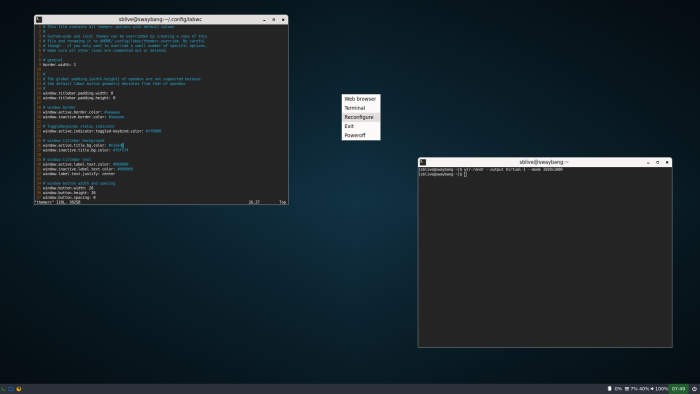Every so often, I like to step back and explore different window managers or compositors, especially those that might offer something lightweight and interesting for the ArchBang project. Recently, I decided to spend some time with Labwc, a Wayland compositor inspired by Openbox. Since ArchBang is traditionally based on Openbox, it made sense to look at what Labwc has to offer — and whether it could form the basis of a Wayland edition.
Labwc is clean, minimal, and fast. It does a great job of preserving the feel of a traditional stacking window manager while embracing the Wayland protocol. In fact, on first boot, it felt like Openbox had been transported into the world of Wayland — which is no small feat.
Familiar Territory
For Openbox users, the transition to Labwc can feel quite smooth. It offers the same right-click root menu, window decorations, and basic configuration setup. The system responds quickly, uses minimal resources, and integrates well with tools like Waybar (to some extent).
From a user’s perspective, Labwc looks and feels like a natural next step in the post-X11 world.
So Why Not Use It in ArchBang?
Despite all its strengths, Labwc isn’t the best match for ArchBang — at least not in its current form. Here’s why:
- Right-click menus and multiple click behaviors: While familiar to some, they could confuse users who are expecting the streamlined and predictable behavior seen in tiling WMs like Sway. ArchBang leans toward simplicity and clarity, and introducing multiple context-based menus might be a step back.
- Panel limitations: Waybar works, but support is limited. Virtual desktops aren’t visible out of the box, and there’s no built-in way to display the active window title — something ArchBang users have come to expect from panels like Tint2 or Polybar.
- Configuration complexity: While Labwc offers Openbox-style configs, its defaults live deep within the system and require copying or creating files manually to make changes. For a live ISO or new install, that adds an extra layer of setup that many users won’t want to deal with.
- No built-in window listing or launcher: Tools like Wofi or Rofi can help, but need to be manually integrated. ArchBang has always aimed to give users an experience that’s ready to go, with minimal post-install tweaking.
My Conclusion
Labwc is a solid and promising project. For experienced users who want a minimal, stacking Wayland compositor, it might be exactly what they’re looking for. But for ArchBang, which aims to offer a ready-to-use, live desktop environment, it would require more polish and support tooling to meet the expectations of our users.
For now, I still believe a floating Sway setup offers a more balanced Wayland experience — especially when paired with Rofi or Wofi for launching applications, and tools like autotiling if users want tiling behavior. It’s lighter than a full desktop environment, but still offers a modern and consistent user experience.
I’ll continue to keep an eye on Labwc. It’s progressing quickly and could become a key part of future Wayland desktops — just not for ArchBang, at least not yet.
Stay safe 😉
